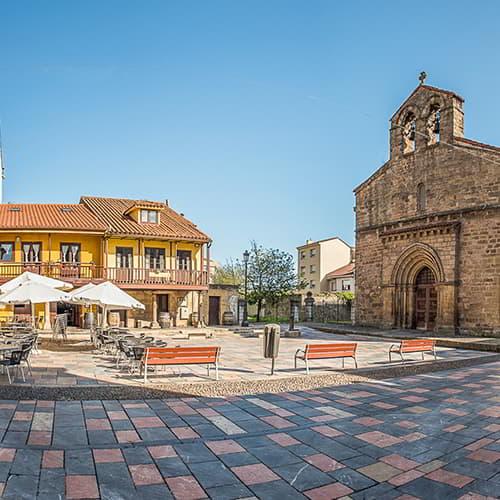Avilés, Gijón/Xixón, and Oviedo/Uviéu are the three cities of Asturias, each with its own personality
Well connected to each other and located at a short distance, you can easily travel between them by car, train, or bus. The cities of Asturias - Oviedo/Uviéu, Gijón/Xixón, and Avilés - form a friendly and vibrant urban landscape with a rich past and present. Gijón/Xixón and Avilés, due to their maritime and port character, have their own coastal features, while Oviedo/Uviéu - the capital of the Principality - is an inland city surrounded by noble and historic hills and mountains.
Oviedo/Uviéu
It preserves the regal bearing it acquired during the High Middle Ages with the emergence of the Kingdom of Asturias and the Camino de Santiago, from which the first pilgrim, King Alfonso II, departed, making it the birthplace of the Camino Primitivo. Its historic center - one of the most interesting in the Iberian Peninsula - preserves important vestiges from that era and subsequent periods. Today, Oviedo/Uviéu is a modern and lively city that offers visitors the best of Asturian culture and age-old traditions, along with a rich and elaborate gastronomy.
Furthermore, the capital of Asturias is internationally known and recognized for being the venue of the Princess of Asturias Awards, which are annually awarded at the Campoamor Theater to distinguished personalities from around the world in various fields of knowledge and human activity.
Gijòn/Xixón
Located in a privileged natural enclave, with an impressive bay, Gijón/Xixón is a city that looks out to the sea and treasures an impressive past dating back to pre-Roman times. It has a vibrant atmosphere, especially during spring and summer, and boasts magnificent beaches, seaside promenades, and beautiful residential areas. One of its great current cultural landmarks is Laboral Ciudad de la Cultura.
It is an ideal place for practicing all kinds of water sports and is a reference in the world of regattas in the Atlantic region.
Its origins lie in one of the most important prehistoric hillforts in Europe, Noega, which later became a strategic enclave of the Roman Empire. From the 18th century onwards, it was a prominent center of thought and industrialization in Europe.
/documents/39908/67656/gijon.jpg/fadefe36-1dbd-9af3-3be2-d0d8b5b869cc?t=1685967824372

San Lorenzo Wall Promenade
Avilés
It is the only city in Asturias that has a marvelous natural estuary: its river estuary. In addition, this maritime city, with a medieval atmosphere in its oldest part, has one of the best-preserved historic quarters in northern Spain. With a splendid riverside promenade, Avilés is a city at the forefront, as demonstrated by the Niemeyer Center, located on the other side of the estuary.
As the birthplace of Pedro Menéndez de Avilés, the Adelantado of Florida and founder, among other notable achievements, of the first city in the United States, Avilés has a remarkable cultural tradition. It is a true city of the arts, with its school of arts and crafts, conservatory, and the Palacio Valdés theater, among others.
Furthermore, in terms of popular traditions, the city is well-known for its Antroxu (carnival) as well as its Fiesta del Bollo, which takes place on Easter Monday and is celebrated with a massive meal in the historic quarter of the city.



